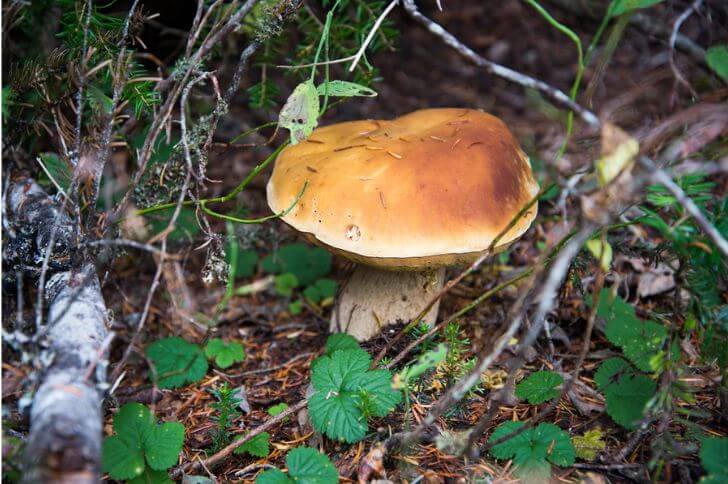Mushrooms are a type of fungus that can be found all over the world. In Georgia, there are many types of mushrooms that grow in the wild. Some of these mushrooms are edible and others inedible.
Common mushrooms of Georgia include morels, chanterelles, oysters, puffballs, fly agarics, wood ear fungus and even truffles.
It is important to know how to identify them before picking them and in the article below we’ll include a detailed description plus pictures to help you in identifying wild mushrooms.
List of Edible Mushrooms in Georgia
You must practice caution when hunting mushrooms. Only harvest fungi that you can properly identify or better hunt in the company of an experienced forager
1. Golden chanterelles
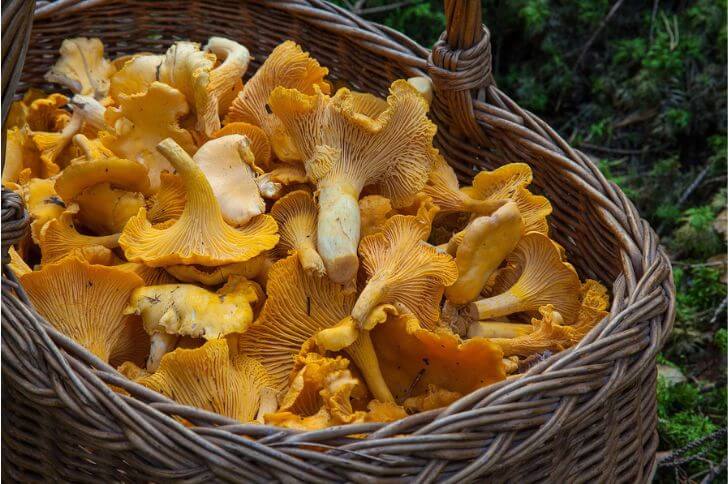
Golden chanterelles are a type of mushroom that is highly sought after for its flavor and texture. They can be found in the wild during the spring to early summer months, and they are prized for their golden color and delicate flavor.
How can you identify these mushrooms? They love shade and spots with lots of moisture. Be on the lookout for an egg-yellow mushroom with randomly forked and rounded edges.
Golden chanterelles are often used in dishes like risotto or pasta, and they are also a popular ingredient in soups and stews.
Ingredients:
-1 cup vegetable broth
-1 tablespoon olive oil
-1/2 pound golden chanterelle mushrooms, sliced thin
-1/4 teaspoon salt
-Pinch of black pepper
Instructions:
1. In a large skillet over medium heat, cook the vegetable broth until it just starts to simmer.
2. Add the olive oil and swirl to coat the pan. Add the sliced chanterelle mushrooms and cook for about 5 minutes, or until the mushrooms are soft and starting to brown. Add salt and black pepper. Serve hot.
2. Pecan truffle
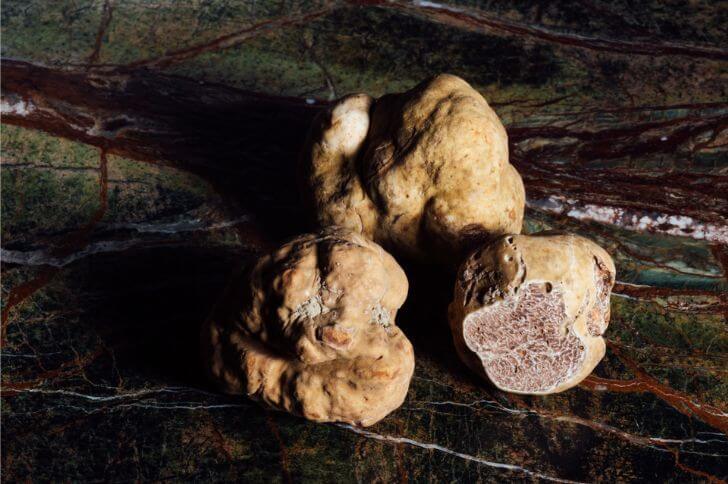
What could be more decadent than a chocolate truffle infused with the flavor of pecans? This Georgian fungi is a favorite for its sweet, buttery taste and smooth texture. The pecan truffle is perfect for holiday gifting or for indulging in yourself.
To identify this wild mushroom, check for a round brown-colored mushroom. The skin can be smooth or with grooves. When you cut it, you’ll notice the brownish veins that give it a marble like appearance.
3. Wood ear
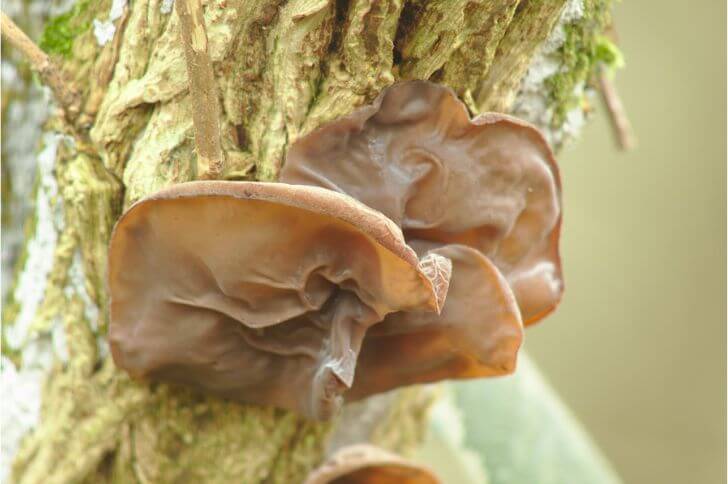
Wood ears are a type of edible mushroom that is found growing on the deadwood of hardwood trees. They are dark, reddish-brown color with a floppy, ear-like shape. The wood ear has a mild flavor and can be eaten fresh or cooked. It is often used in Asian cuisine, where it is added to soups, stews, and stir-fries.
Ingredients:
-1 pound wood ear mushrooms
-1 tablespoon vegetable oil
-2 cloves garlic, minced
-1 teaspoon ginger, minced
-1/2 teaspoon salt
-1/4 teaspoon black pepper
-1/4 cup chicken stock
-1 tablespoon soy sauce
-1 green onion, chopped
Instructions:
1. Heat the oil in a wok or large frying pan over high heat. Add the garlic and ginger and stir-fry for 1 minute. Add the mushrooms and stir-fry for 2 to 3 minutes until they are slightly browned.
2. Add the salt and black pepper and continue to stir-fry for 1 minute longer. Pour in the chicken stock and soy sauce and bring to a boil. Reduce heat to low, cover with a lid and simmer for 10 minutes until the mushrooms are cooked through. Stir in chopped green onion. Serve hot.
4. Turkey tail
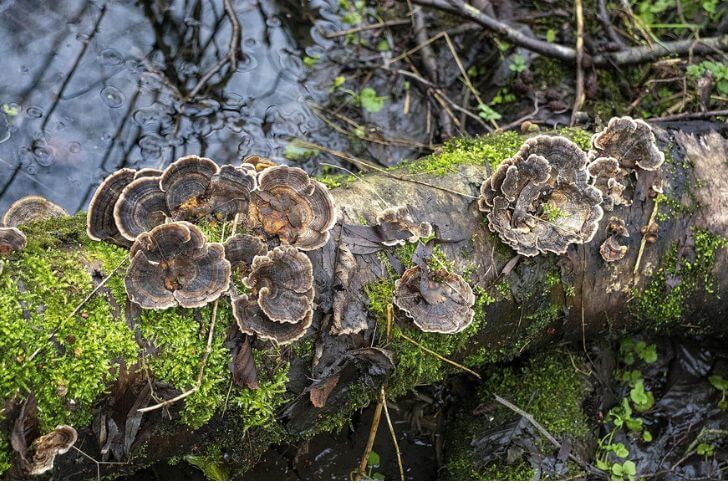
Turkey tail is an easily identifiable mushroom that grows in late May to December. It can be found on the ground in woods and forests, or growing on dead trees. The mushroom is shaped like a fan or turkey’s tail, giving it its name.
It comes in multiple colors including greenish, tan, light brown, and black. Turkey tail has a leathery texture. This fungi is mostly consumed in powder form or used to make teas.
Related Read: Check different types of mushrooms in Colorado
5. Oyster mushrooms
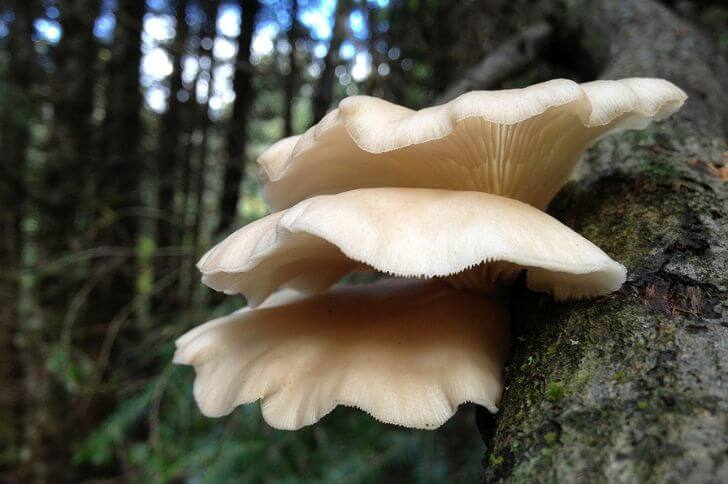
Oyster mushrooms are a type of mushroom that is found in the Georgia wild. They are white or grayish and have a smooth, velvety texture. Oyster mushrooms are often eaten cooked, but they can also be eaten raw. They have a slightly crunchy texture and you’ll notice a delicate flavor. Oyster mushrooms are popular in many different types of cuisine, and they are also used as a medicinal mushroom.
6. Two-colored bolete
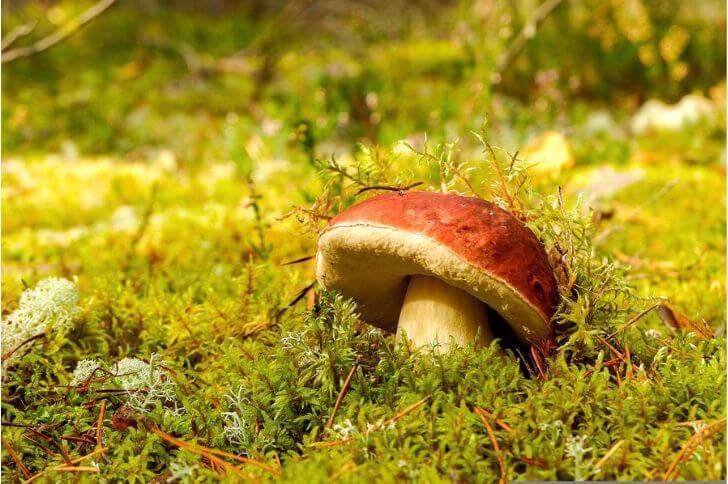
This bolete is aptly named, as it features two colors on its cap: a deep red upper and yellow below. Though edible, most people have described it as lacking in taste compared to other Georgian mushrooms like the golden chanterelles. They are best cooked with red meat.
7. Deer mushroom
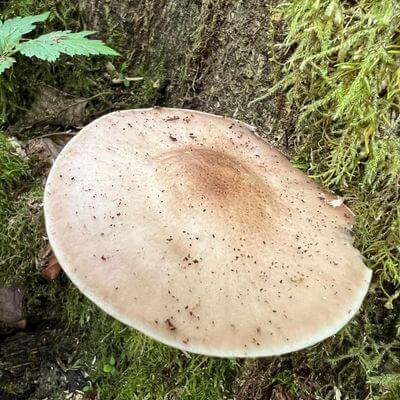
Deer mushrooms or Pluteus atricapillus is a saprophytic fungus that is found in parts of the US. It is a white to grayish mushroom that has a soft, spongy texture. The deer mushroom has a wide variety of culinary uses and is considered to be a delicacy. Here’s my quick way to prepare them:
Ingredients:
-1 pound deer mushrooms
-1 tablespoon olive oil
-1 garlic clove, minced
– Cream cheese
-2 tablespoons chopped fresh parsley
-1 teaspoon dried thyme
-Kosher salt and black pepper to taste
Instructions:
1. Preheat the oven (375 degrees)
2. Toss mushrooms with olive oil and garlic in a large bowl. Season with thyme, salt and black pepper. Distribute on a baking sheet and roast until tender.
3. Sprinkle with parsley before serving.
8. Tawny grisette
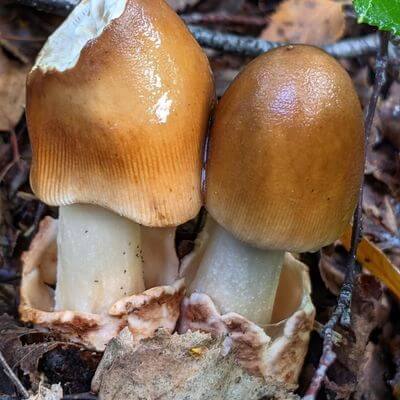
The tawny grisette mushroom is a small mushroom that is edible and has a nutty flavor. It is best eaten when it is young and fresh. How can you identify this fungus? Young mushrooms have an egg-shaped cap which flattens as it matures.
The cap is brownish with white edges. Notice the gills under the cap. Its stem is narrow at the top and pale tawny or white colored. Unless you know how to distinguish it from other members of the Amanita family, we recommend you don’t pick them.
9. Pear-shaped puffball
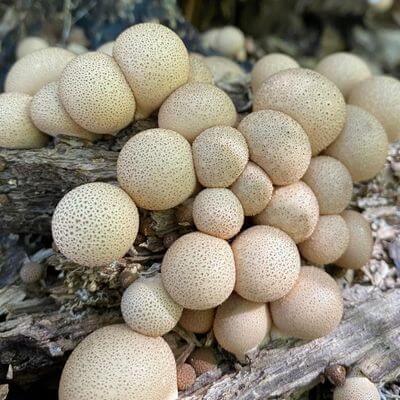
Pear-shaped puffballs are a type of fungus that is easy to identify because it has a pear-like shape and a smooth, white surface.
The mushroom is edible, especially when young or heavily fruited. We recommend you dry it and blend it to a powder which you’ll then add a spoonful to meals you are cooking.
10. Blusher
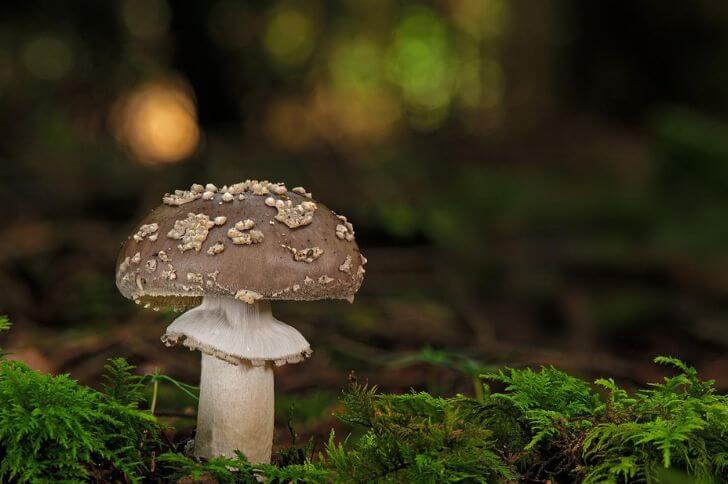
Blusher mushrooms are an edible mushroom species that are medium-sized, round, white-gilled mushrooms with a small, red cap.
The mushroom’s flesh turns red when it is bruised or cut. Blusher mushrooms are edible, but should be eaten only after being well cooked.
11. Honey mushroom
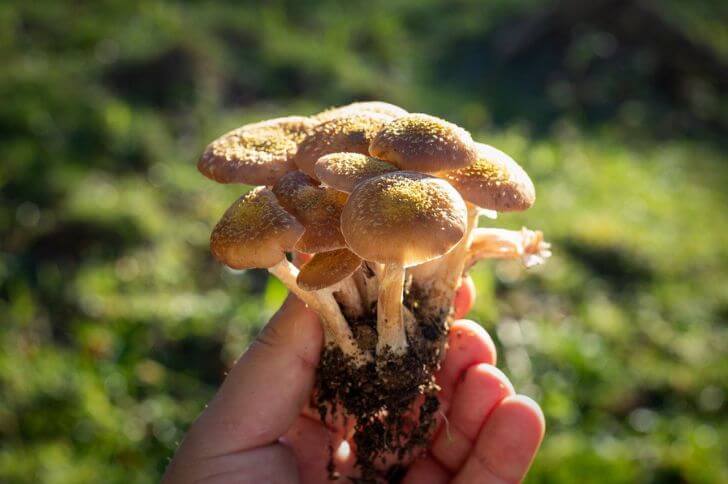
Found in most woods in Georgia, the honey mushroom (Armillaria) is a species of fungus in the family Physalacriaceae. The mushrooms are prized for their sweet, honey-like taste, and are collected for commercial sale.
They grow on the ground singly or in groups and have a yellowish to brown cap that is up to 4 inches wide. The stem is whitish to brown, and the gills are whitish turning yellow as they age.
12. Common puffball
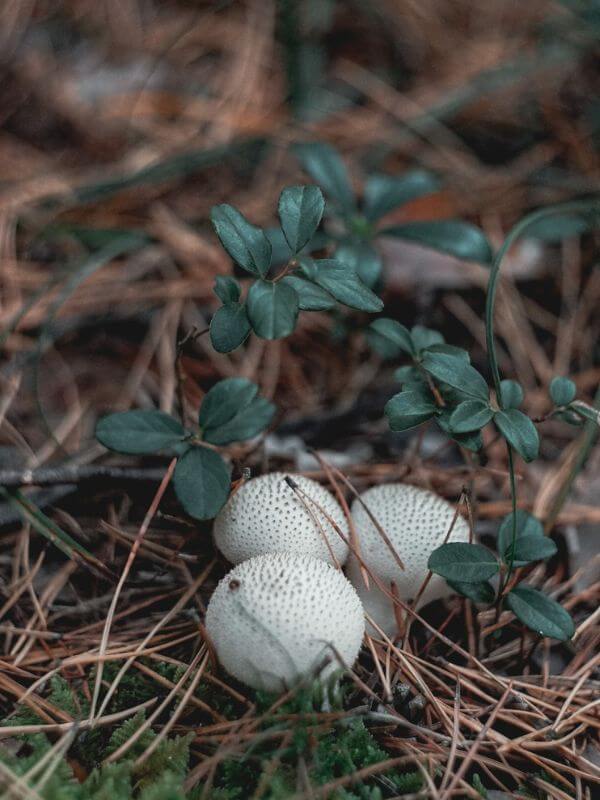
Common puffballs are often mistaken for mushrooms, but are actually a type of fungus. Puffballs can be identified by their round shape and white color.
Unlike mushrooms, puffballs do not have a stem or gills. Puffballs can be eaten when they are young and fresh, but should not be eaten if they are older, as they can cause stomach upset.
13. Fishy milkcap
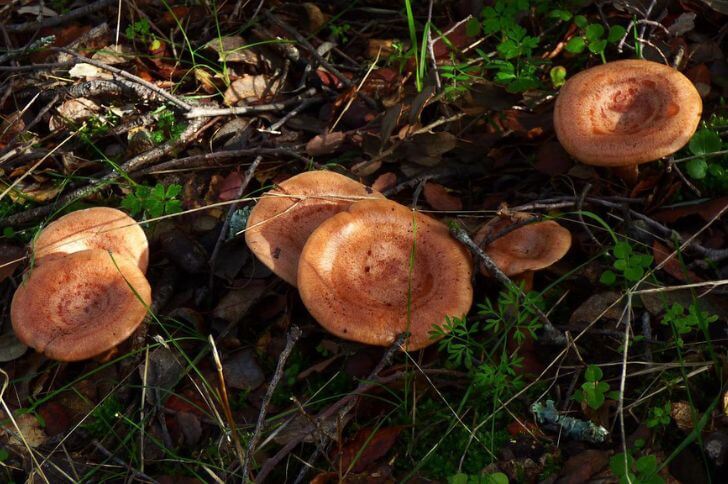
Mostly found in summer months, this mushroom is aptly named for its fishy scent, which becomes more apparent as the mushroom matures.
The cap is convex when young, but flattens out with age. It ranges in color from yellow to orange to brown, and has white gills and a white spore print.
It grows in clusters on the ground in hardwood forests. It is a good edible mushroom, but should not be eaten raw because of its strong flavor.
14. Eastern cauliflower
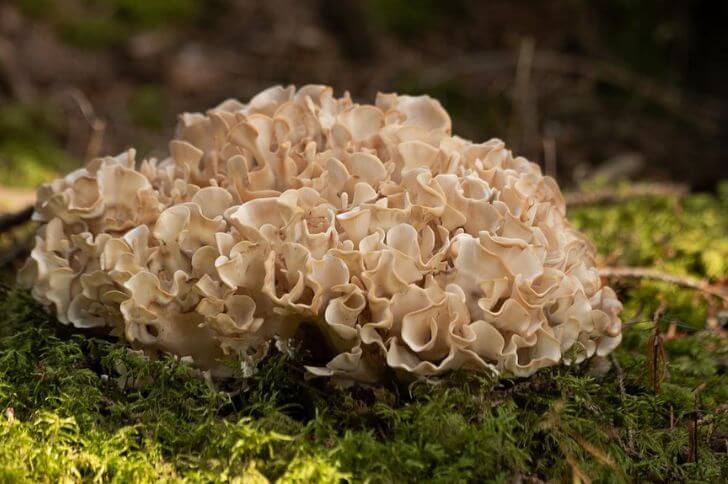
The eastern cauliflower mushroom is a fungus that grows close to hardwood trees especially oaks and conifers. It is a saprobic fungus, meaning it breaks down dead organic matter. The mushroom has creamy white or brown-yellow color and looks like a cauliflower or a brain.
Eastern cauliflower mushrooms are quite huge and need thorough cleaning before cooking. This mushroom is perfect for soups.
15. White-pored chicken of the woods
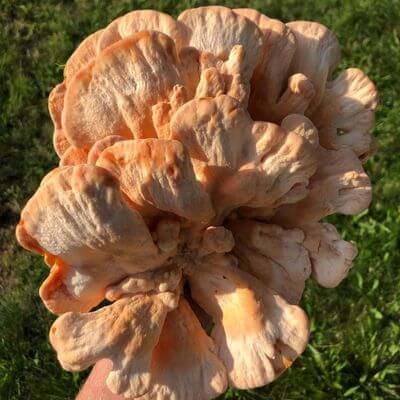
White-pored chicken of the woods are very rare fungus that grow on dead trees, logs, and stumps. Also known as the chicken-of-the-woods or crab-of-the-woods, it is also sometimes found on live trees, but this is not common.
The fungus is bright orange when it first appears, but it will turn yellow or white as it matures.
White-pored chicken of the woods is very edible and has a chicken-like flavor and can be used in place of chicken in most recipes. Chicken of the woods is available fresh or dried and can be found at most grocery stores.
16. Blue green cracking russula
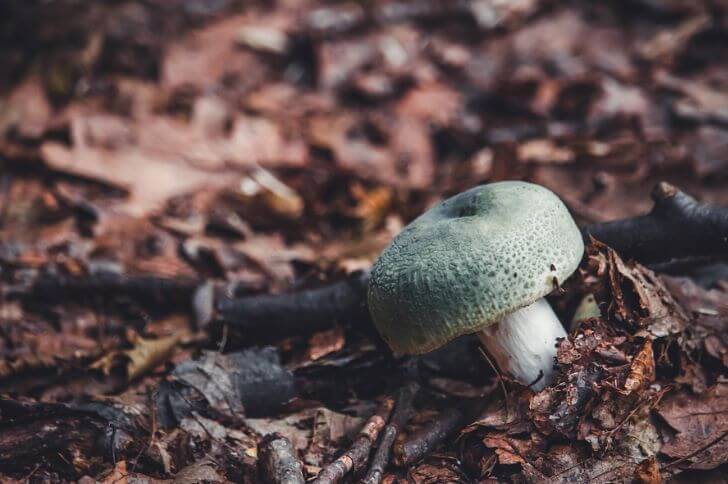
Blue green cracking russulas are easily identified by their dull blue and green colors, as well as the cracking texture of its cap, especially the edges. Underneath you’ll notice creamy white gills. Stem is off-white while the flesh is white.
This mushroom is edible, but should be eaten only after it has been cooked. The blue green cracking russula can be found growing in forests and grasslands during the summer and fall.
17. Peppery milkcap
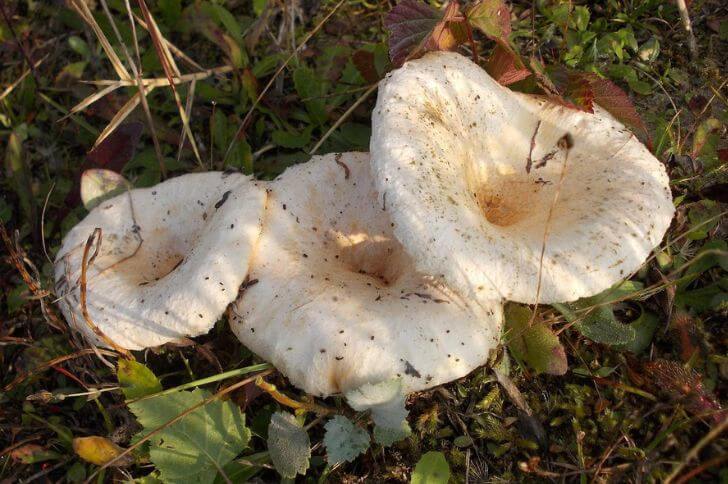
Peppery milk caps are a small, white-gilled mushroom with a peppery taste. They grow in clusters on the ground in woods.
To identify these mushrooms, be on the look for white mushrooms with a flat cap. Its gills are closely spaced. The mushrooms are edible, but can be tough and peppery.
18. Onion-stalk parasol
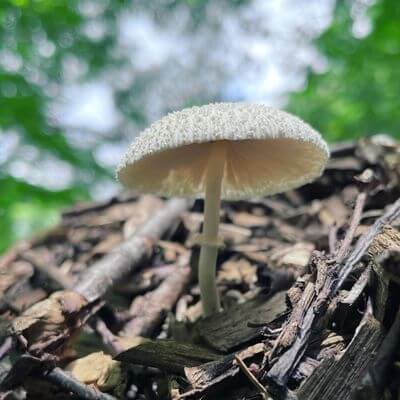
The onion-stalk parasol mushroom is a saprobic fungus that grows on the decaying remains of hardwood trees.
This mushroom has a white to cream-colored cap that is up to 8 inches in diameter, and a stalk that is up to 12 inches tall. The gills are cream-colored, and the spores are olive-green. This mushroom is edible, but it has a bitter taste.
19. Blewit
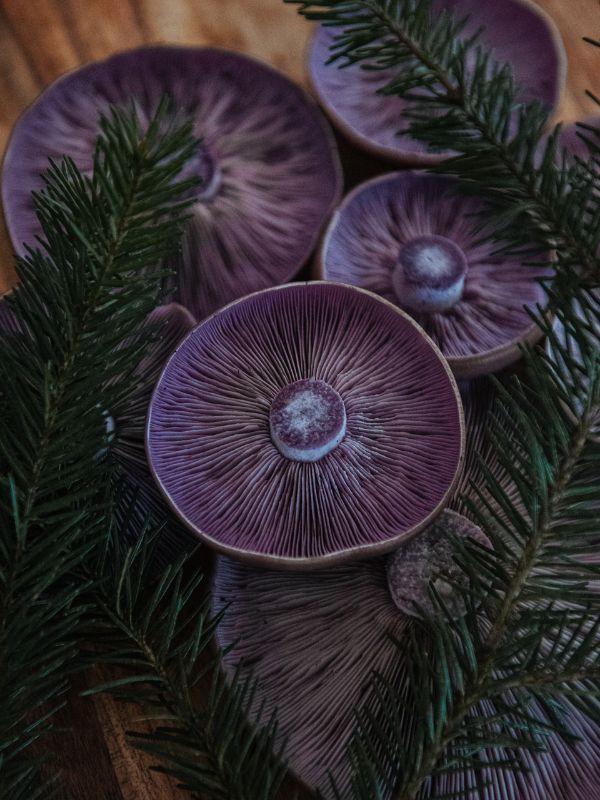
Blewit mushrooms are saprophytic mushrooms. The fruiting body has a convex to umbonate cap about 4 inches in diameter, lilac to purplish brown in color, and covered with silky white fibrils. The gills are crowded and thin. The stem is thick and short. Taste of the fresh mushroom is mild.
The Blewit mushroom fruits from late autumn through summer. It grows on decaying wood or on the ground in parks, gardens, and open woodlands.
20. Lobster mushroom
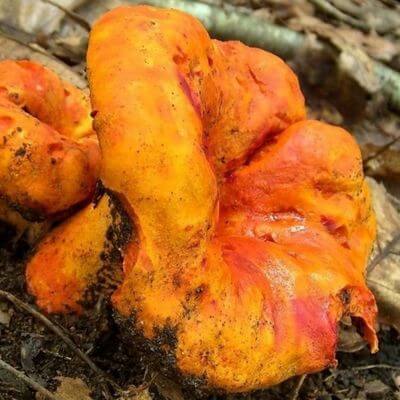
What is a Lobster Mushroom? A Lobster mushroom is an orange-colored, trumpet-shaped mushroom that grows close to hardwood trees. The mushroom gets its name from its resemblance to a lobster tail.
Lobster mushrooms are edible and can be used in recipes that call for lobster meat. The mushrooms are high in protein and have a savory, seafood-like flavor.
Lobster mushrooms can be found in the wild during the fall and winter months. They can also be cultivated by growing them on straw or sawdust logs.
21. White morel
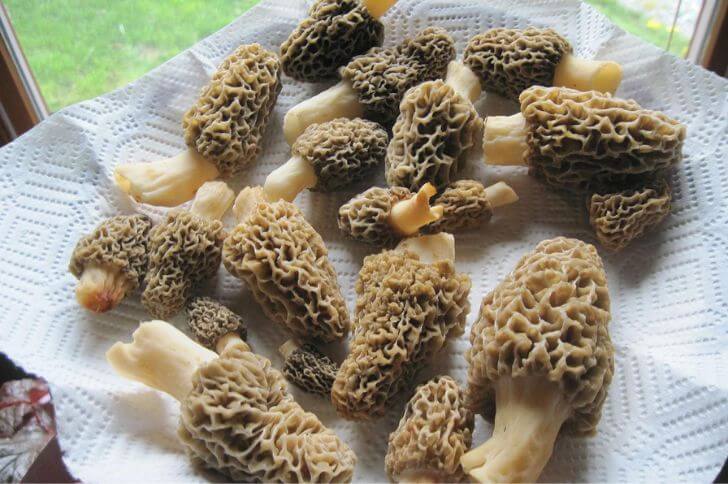
Are there morel mushrooms in Georgia? White morels can be found in parts of Georgia. It has a conical or bell-shaped cap, and a stem that is often hollow.
The flesh of the mushroom is white, and the taste is considered to be delicate and sweet. White morels are prized by gourmet chefs for their flavor, and they are also sought after by mushroom hunters for their rarity.
Non edible mushrooms Georgia
23. False-turkey tail
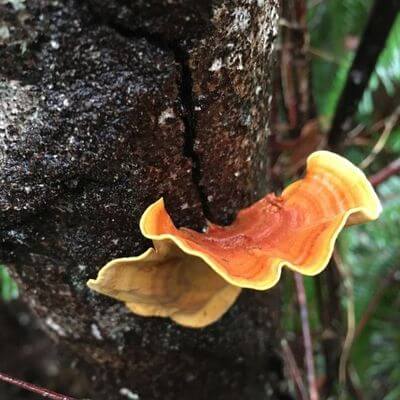
A false-turkey tail, also known as an impostor turkey tail, is a mushroom that resembles a turkey tail but is not edible.
It is often confused with the edible turkey tail mushroom, Trametes versicolor, due to its similar appearance.
The false-turkey tail can be distinguished from the edible turkey tail by its lack of pores on the underside of the cap.
24. Reddish brown bitter bolete
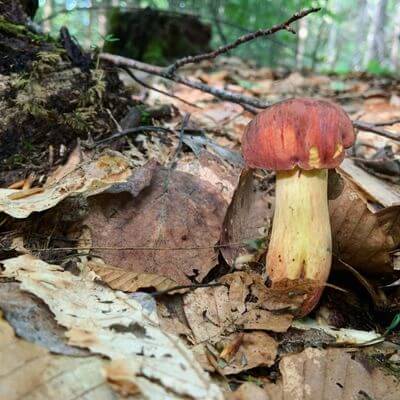
Reddish brown bitter boletes are mushrooms that have a reddish brown color with a brownish stem and a bitter taste.
It is an edible mushroom, but some people find the taste to be too strong.
25. Fly agaric
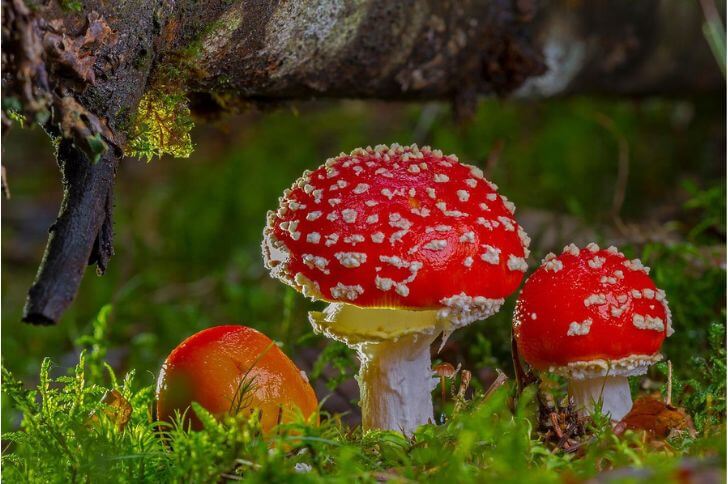
Fly agarics are a species of poisonous mushrooms that contains toxins. They are red-white colored on the dome-shaped cap with a white-brown stalk.
Where to forage for Mushrooms
From Blue Ridge mountains in the north to the woods in the south, there are plenty of places you can go foraging for mushroom species.
Also, there are specialized classes that you can join where you can learn to identify the mushrooms easily.
Final thoughts
From pecan truffles to chanterelles, there are many species that grow in this state. In the article above we’ve looked at different edible and nonedible mushrooms in GA. Hope you’ll get a few pounds this summer and enjoy these culinary delights.
Hi There,
My name is Jenny. I’m the Chief Editor at Try Green Recipes and besides making yummy and healthy foods for my kids, grandkids, and friends. I’m new to the blogging world but I believe what I have to share is unique and will bring joy to your home. If you are adventurous and want try something tasty, let’s get started.

